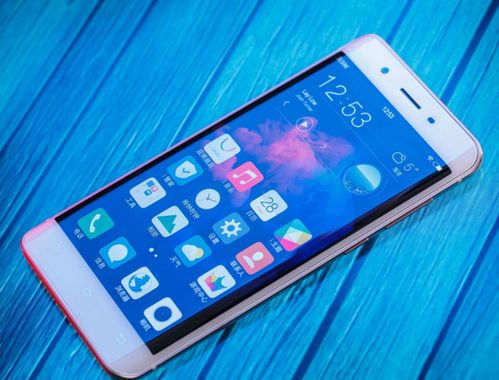When Your Phone Battery Bulges: The Hidden Costs of Ignoring a "Swollen" Power Pack
- Jessie Jones
- Sep 24
- 4 min read
If you’ve ever noticed your phone feeling “thicker” than usual, or spotted an unusual gap between the screen and frame, chances are your battery is bulging—a silent red flag that’s far more dangerous than it seems. A swollen battery isn’t just an eyesore; it’s a ticking time bomb that can turn a minor repair into a costly nightmare. Let’s unpack what happens when you ignore this warning, and why acting fast could save you hundreds (or even prevent disaster).
What Causes a Battery to Bulge?
Lithium-ion batteries, the lifeblood of most smartphones, rely on a delicate balance of chemical reactions. Over time, factors like repeated overcharging, exposure to extreme heat (hello, sunny car dashes!), or simply aging can damage the battery’s internal structure. Lithium ions may start to deposit unevenly on one side of the battery, causing gases to build up and the casing to expand—a phenomenon known as “swelling.”
While modern phones have safety features (like automatic shut-offs at 100% charge) to mitigate this, no design is foolproof. By the time you notice a bulge, the battery has already entered a “failure mode.”
>>>We offer a comprehensive selection of batteries designed for a wide array of Smartphones. Our product range covers essential components for devices like iPhone, DELL , Baofeng, Samsung, and more.
For instance, here are some featured items:
If you’re looking for High-compatibility replacement battery、Industrial-grade power adapter or Power supply for other smart devices , feel free to click through to explore our offerings.

The Domino Effect of Ignoring a Swollen Battery
Many users delay replacing a swollen battery, assuming it’s a “cosmetic issue” or hoping it will “settle down.” Big mistake. A bulging battery exerts relentless pressure on the phone’s internal components, and the consequences can escalate quickly:
Camera modules pushed out of alignment: The most common visible damage. Phones like iPhones and high-end Android devices have compact camera systems mounted tightly inside the frame. A swelling battery can push these modules upward, causing blurry photos, misaligned autofocus, or even cracks in the camera lens.
Motherboard shorts: The battery’s swollen edges can pinch or puncture delicate circuitry on the motherboard. Lithium-ion electrolytes are corrosive, and a short circuit here can lead to random shutdowns, battery drain, or even spontaneous fires.
Screen damage: In extreme cases, the pressure can crack the OLED display or warp the frame, turning a simple battery replacement into a full-frontal repair job.
A recent case we reviewed involved a user who ignored a bulging iPhone 14 Pro for three months. By the time they sought help, the battery had pushed the rear camera so far out of place that it was physically touching the screen. The repair bill? A staggering $420 for a new battery, screen replacement, and motherboard repair—doublethe cost of a timely battery swap.
Repair Costs: Official vs. Third-Party
So, how much does it really cost to fix a swollen battery disaster? Let’s break it down by scenario:
Issue | Official Manufacturer Repair (e.g., Apple Store, Samsung Care+) | Authorized Third-Party Repair | DIY (Not Recommended) |
Battery Only | 89–149 (varies by model; e.g., iPhone 15 Pro Max: $149) | 50–90 | 20–40 (but risk of damage) |
Battery + Screen | 200–350 (e.g., iPhone 15 Pro: 279screen+149 battery = $428) | 120–200 | High risk of misalignment |
Battery + Motherboard | 400–700+ (depends on extent of corrosion) | 250–450 | Rarely feasible |
Note: Prices reflect 2024 data; costs rise with newer models due to proprietary parts.
The steep difference between official and third-party repairs boils down to two factors: parts (OEM batteries/screens are pricier but guaranteed to fit) and labor (authorized shops use specialized tools to avoid further damage). While DIY might seem cheaper, a swollen battery often requires disassembling the entire phone—removing adhesive, handling fragile connectors, and disposing of hazardous materials safely. One wrong move could turn a 150fixintoa600 motherboard replacement.
Prevention: How to Spot (and Stop) a Swelling Battery Early
The good news? Swollen batteries don’t strike without warning. Here’s how to catch them early:
Physical checks: Feel the edges of your phone. If the back panel is curved upward (especially near the camera bump) or the screen lifts slightly off the frame, act immediately.
Performance quirks: Sudden battery drain, random restarts, or the phone feeling “hot” even at low usage can signal internal stress.
Battery health apps: Tools like iOS’s “Battery Health” or Android’s “AccuBattery” won’t detect swelling, but they’ll alert you to rapid capacity loss—a sign the battery is degrading.
If you spot any of these signs, stop using the phoneand power it down. Keep it away from heat sources, and avoid charging it (overcharging a swollen battery increases pressure). Contact a professional immediately—even a 48-hour delay could escalate costs.
The Bottom Line
A swollen battery isn’t just an inconvenience; it’s a safety hazard and a financial time bomb. While replacing a healthy battery costs as little as $50, ignoring the issue can lead to hundreds in repairs—or worse. Invest in regular battery checks, prioritize official repairs for peace of mind, and remember: when it comes to lithium-ion batteries, “if in doubt, get it out.” Your phone (and your wallet) will thank you.





Comments